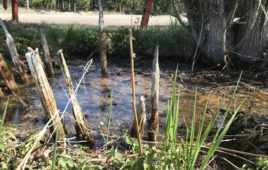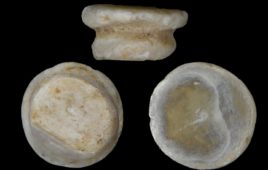 Containing evidence from the last 24 million years of Australian fauna history, the Riversleigh World Heritage Fossil Site has revealed a wondrous world of bizarre creatures to scientists.
Containing evidence from the last 24 million years of Australian fauna history, the Riversleigh World Heritage Fossil Site has revealed a wondrous world of bizarre creatures to scientists.
Recently, a team led by University of New South Wales published a study in Scientific Reports detailing the discovery of an extinct group of marsupials who had exquisite tastes.
Based on their fossil morphology, scientists determined that Malleodectes mirabilis feasted on escargot.
“Its most striking feature was a huge, extremely powerful, hammer-like premolar that would have been able to crack and then crush the strongest snail shells in the forest,” said lead study author Mike Archer in a statement.
The fossil specimen the study is based on was found in a 15-million-year-old cave from the Middle Miocene. From a juvenile, the partial skull still possessed baby teeth and was in the midst of teething. According to the researchers, the specimen represents the first and only information regarding the moral dentition of Malleodectes mirabilis.
Archer said though different, the creature appears to be related to the animals that extant Tasmanian devils belong to, known as dasyures. These animals are exclusive to Australia and New Guinea.
Today, the former cave (where the skull was found) is nothing but a limestone floor. Interestingly, the place is littered with bones from thousands of animals.
Suzanne Hand, who contributed to the study, speculated that the juvenile marsupial may have fallen into the cave from its mother’s back while she was foraging, and was unable to find a way out.
“Many other animals that lived in this lush forest met a similar fate with their skeletons accumulating one on top of another for perhaps thousands of years, until the cave became filled with paelaeontological treasures,” Hand said in a statement.
Other fossils found at the site include a ram-sized, sloth-like creature called Nimbadon. And at the at the Riversleigh site, researchers have found leopard-like crocodiles and tusked kangaroos, among other oddities.
“It continues to seem likely that malleodectids specialized on snails but probably also consumed a wide range of prey items including small vertebrates,” according to the researchers. “Whatever their actual diet, malleodectids appear to have filled a niche in Australia’s rainforests that has not been occupied by any other mammal group anywhere in the world from the Miocene onwards.”




